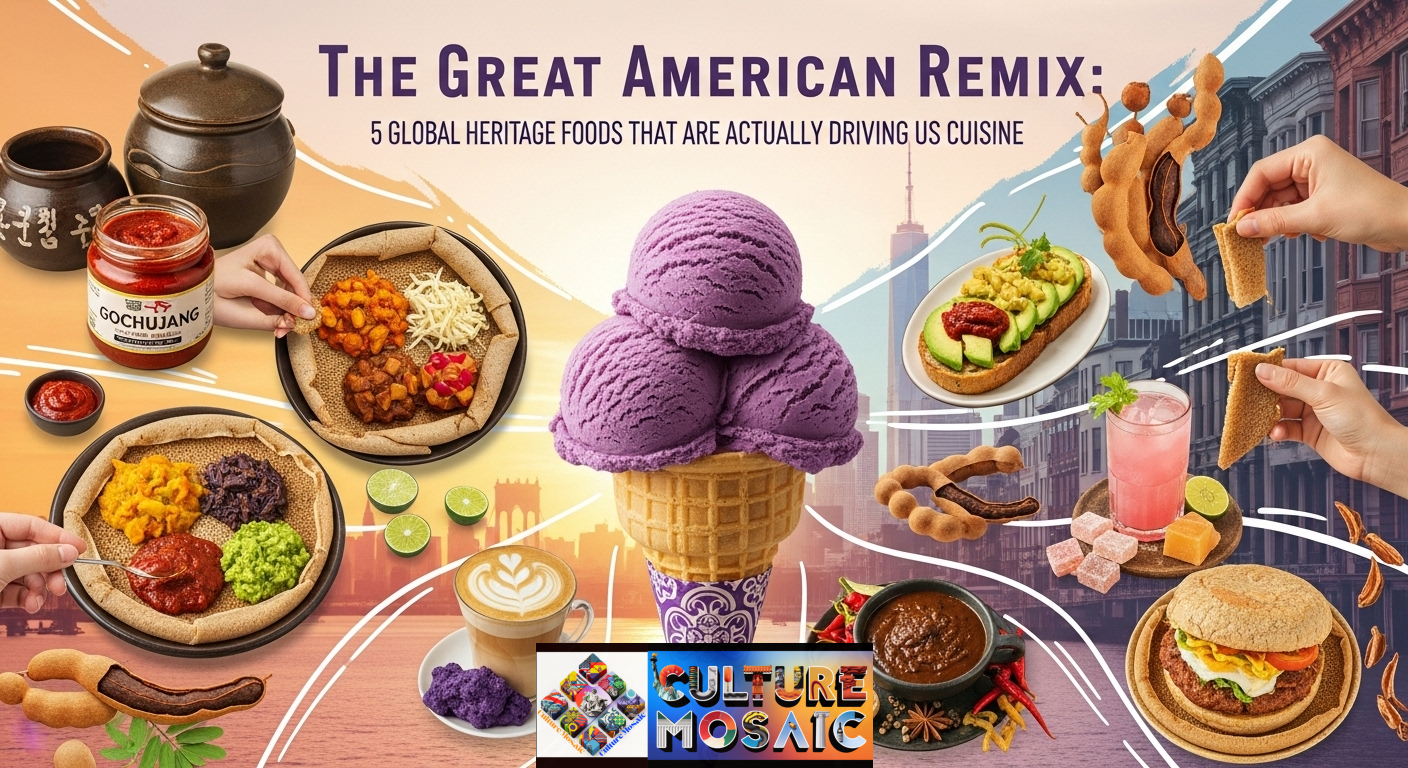Walk into any trendy café in Brooklyn or Portland, and you’ll spot something interesting: purple lattes, fermented chili paste on avocado toast, and spongy flatbreads accompanying rich stews. These aren’t just Instagram-worthy foods. They’re global heritage food traditions that carry generations of cultural wisdom, family recipes, and community stories.
The American food scene is experiencing something deeper than fusion. We’re moving past surface-level trendiness into authentic appreciation of global heritage food that honors its origins while finding a home in modern American kitchens. This shift matters because every dish tells a story about migration, preservation, and the people who refused to let their culinary traditions fade.
What Is Global Heritage Food and Why Does It Matter?
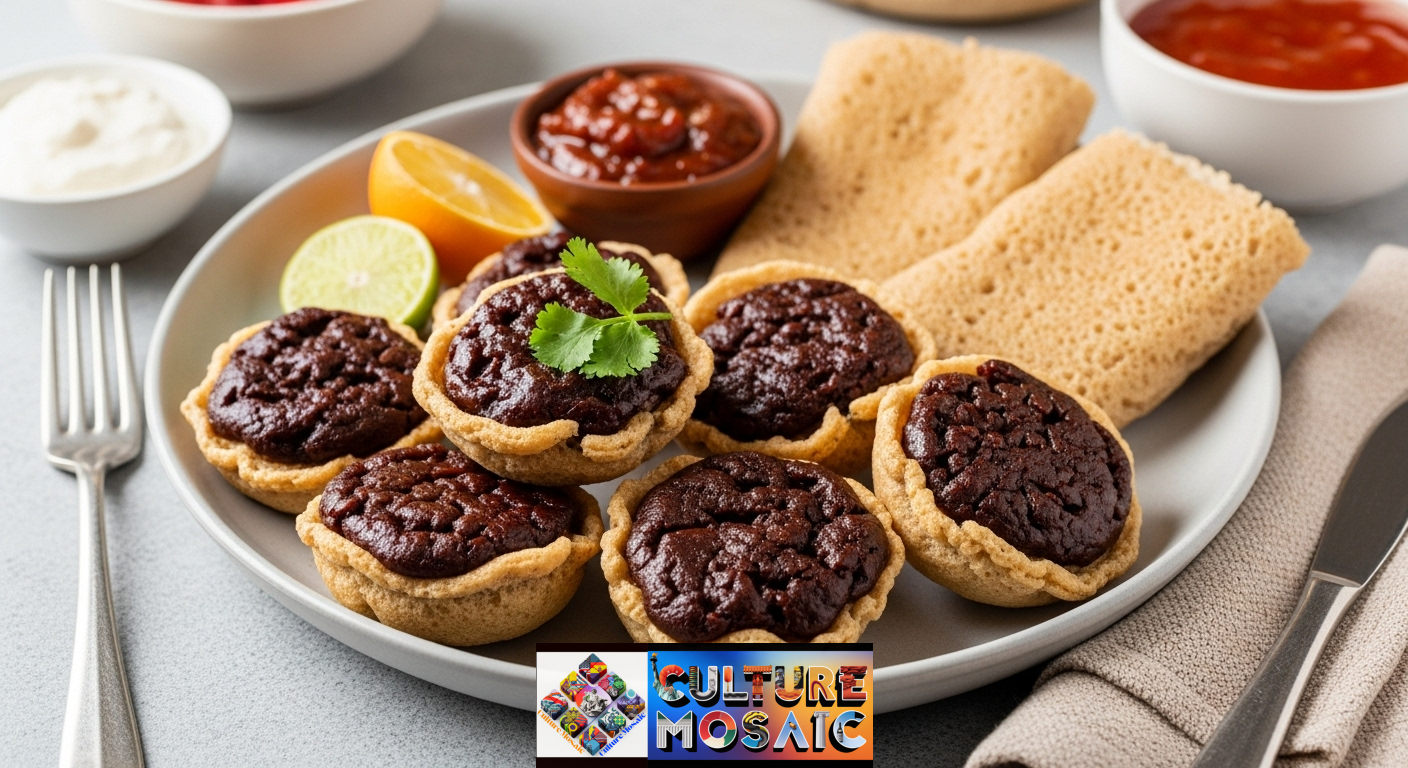
Global heritage food refers to traditional dishes, ingredients, and cooking methods passed down through generations within specific cultural communities. These aren’t just recipes. They’re living history lessons that connect people to their ancestors and cultural identity.
Unlike generic “ethnic food,” global heritage food maintains its authenticity and cultural significance. When Filipino Americans share ube desserts or Ethiopian communities introduce injera to their neighborhoods, they’re preserving foodways that might otherwise disappear in a homogenized culinary landscape.
The distinction matters. A heritage food carries specific preparation methods, cultural context, and community knowledge. It’s the difference between buying pre-made salsa and learning to make mole from a grandmother who learned from her grandmother.
The Filipino American Story: How Ube Became America’s Purple Obsession
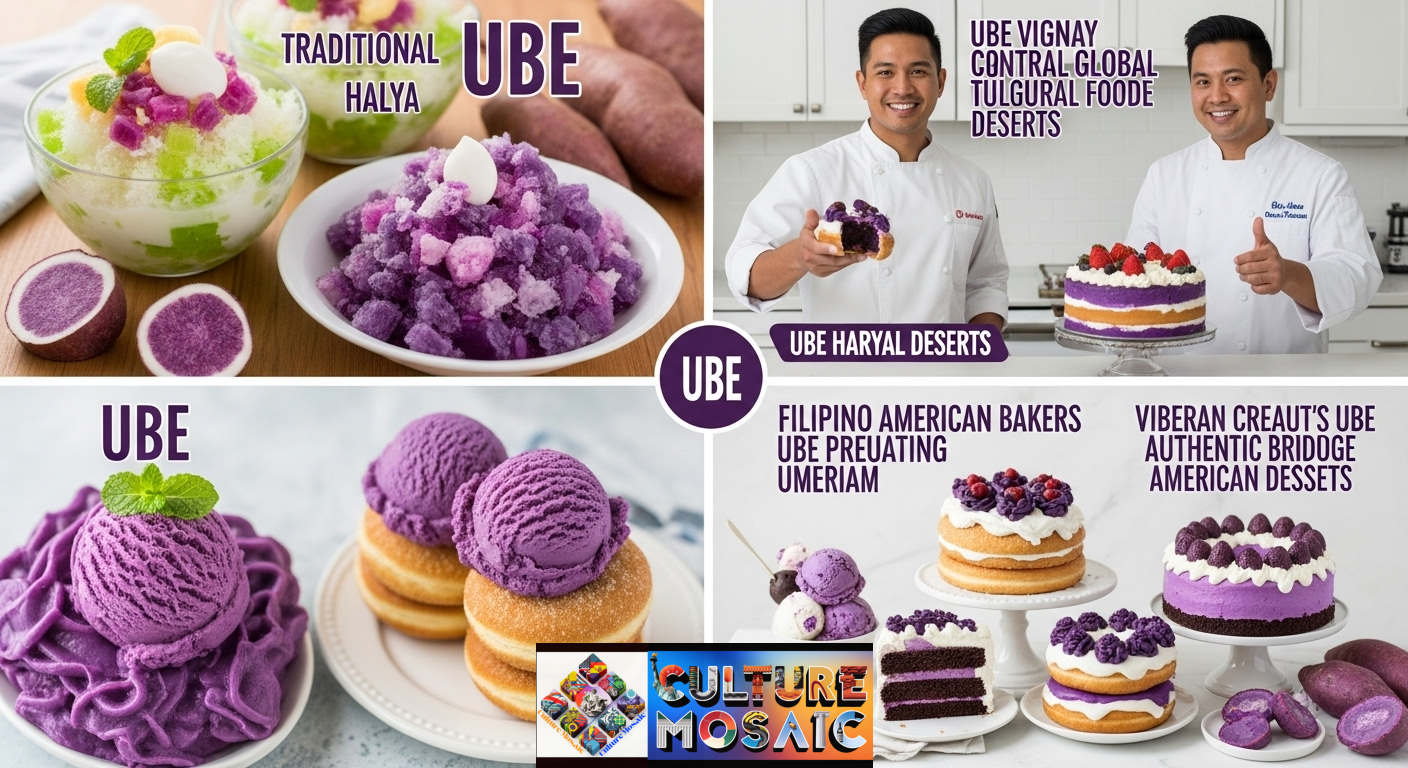
If you’ve scrolled through food content lately, you’ve seen it: vibrant purple ice cream, donuts, and pastries. That’s ube, a purple yam that’s been central to Filipino cooking for centuries. This global heritage food represents something bigger than a color trend.
Filipino Americans make up one of the largest Asian populations in the US, yet their food culture remained relatively unknown until recently. Ube changed that conversation. The ingredient appears in traditional Filipino desserts like halo-halo (a shaved ice treat) and ube halaya (a sweet jam), recipes that Filipino families have made for generations.
The surge in ube’s popularity began when Filipino American bakers and chefs decided to proudly showcase their heritage. They weren’t adapting or hiding their culture. They were presenting it authentically, and American diners responded with genuine interest.
What makes ube a true global heritage food is how it maintains its cultural significance even as it gains mainstream appeal. Filipino bakers still use traditional preparation methods, and the ingredient serves as a gateway for people to learn about Filipino culture beyond just the flavor.
Korean Gochujang: From Family Fermentation Jars to American Pantry Staples
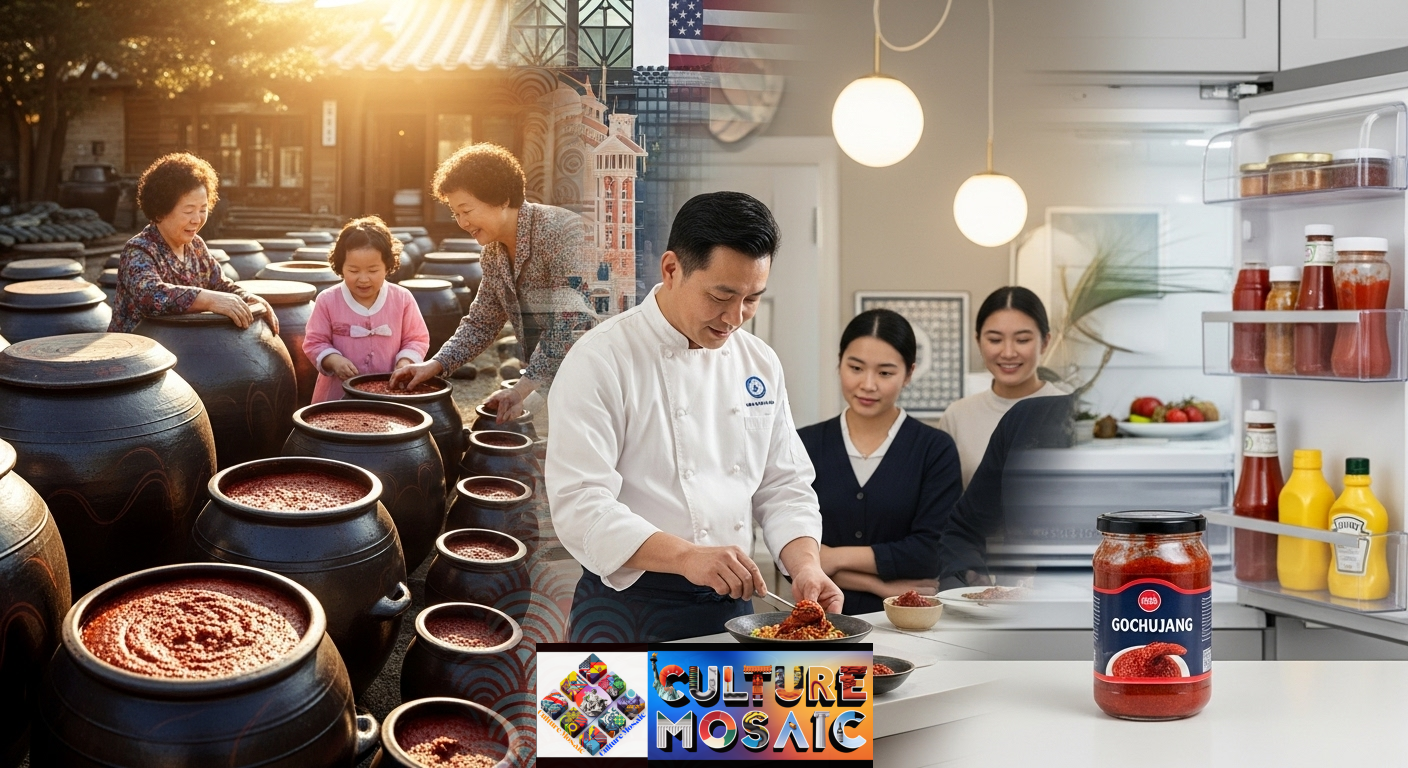
Open most American refrigerators today, and you’ll likely find gochujang alongside ketchup and mayo. This fermented red chili paste represents a centuries-old Korean culinary tradition. It’s a global heritage food in its purest form.
Traditional gochujang requires months of fermentation in earthenware pots called onggi. Korean families historically made large batches annually, storing them in outdoor fermentation sheds called jangdokdae. The process demands patience, specific bacterial cultures, and knowledge passed between generations.
Korean Americans brought this tradition with them, adapting to American climates while maintaining the essential process. Small-batch producers now make authentic gochujang in the US, teaching workshops on fermentation techniques that honor traditional methods.
The ingredient’s mainstream success came through Korean American chefs who refused to dilute their cuisine. They introduced gochujang on its own terms, explaining its complexity rather than simplifying it. Now American home cooks understand that this global heritage food offers more than just heat. It provides umami, sweetness, and depth that comes from careful fermentation.
Ethiopian Injera: The Communal Eating Tradition That Challenges American Dining Norms
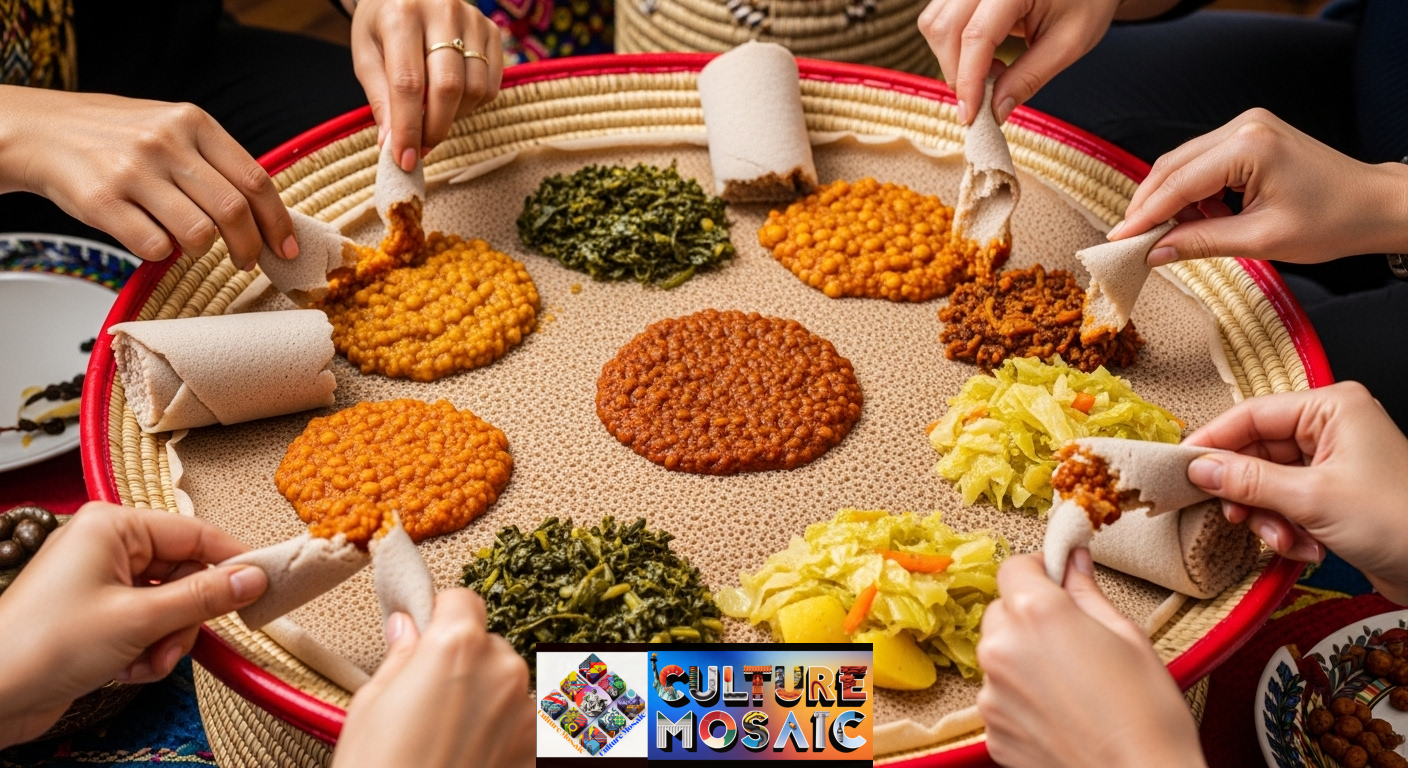
Ethiopian cuisine offers one of the most distinctive global heritage food experiences in American dining: injera. This spongy, slightly sour flatbread serves as both plate and utensil, challenging Western dining conventions in the best way possible.
Making injera requires teff flour, a tiny grain native to Ethiopia and Eritrea. The batter ferments for days, developing complex flavors from naturally occurring yeasts. Cooks pour the batter onto a large, round griddle called a mitad, creating the characteristic bubbles that give injera its unique texture.
Ethiopian and Eritrean communities in American cities have preserved this global heritage food tradition meticulously. They import teff, maintain starter cultures for fermentation, and serve injera the traditional way: spread across a large platter with various stews and vegetables arranged on top.
The communal aspect matters as much as the food itself. Diners tear off pieces of injera, using them to scoop up food directly with their hands. This eating style encourages sharing, conversation, and connection, values central to Ethiopian and Eritrean culture.
American interest in injera goes beyond novelty. People are learning about Ethiopian coffee ceremonies, the importance of fasting foods in Orthodox Christian tradition, and the agricultural significance of teff. This global heritage food opens doors to understanding entire cultural systems.
Tamarind: One Ingredient, Multiple Heritage Stories
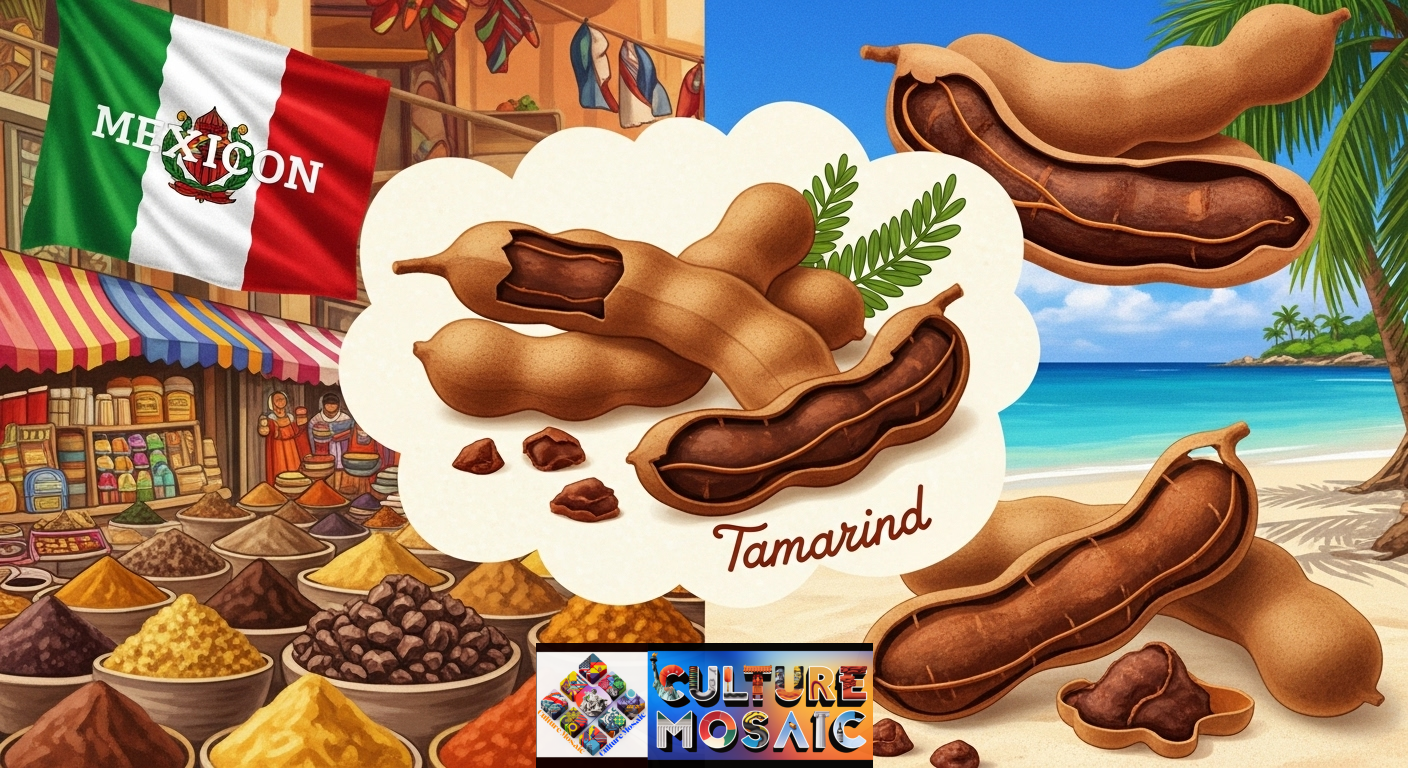
Some global heritage food ingredients transcend single cultures, appearing across continents with distinct preparation methods and cultural meanings. Tamarind is one of these remarkable foods.
In Mexican cuisine, tamarind appears in aguas frescas (fresh fruit drinks), candies, and savory sauces. South Asian cooking uses tamarind for chutneys, curries, and preserving. Caribbean communities make tamarind balls, a beloved childhood treat. Each tradition developed independently, creating unique uses for the same pod.
The tamarind tree grows in tropical climates worldwide, and communities developed their own relationships with this tart, sticky fruit. Mexican American families make tamarind candy using techniques from specific regions. Indian American cooks extract tamarind pulp using methods their grandmothers taught them. Caribbean vendors sell tamarind treats at community gatherings.
What makes tamarind significant as a global heritage food is how it demonstrates food’s ability to carry multiple cultural narratives simultaneously. A single ingredient tells stories about trade routes, agricultural adaptation, and creative cooking across different communities.
Americans are discovering tamarind through various cultural lenses, learning that heritage foods don’t exist in isolation. They’re part of interconnected global food systems where different cultures independently value the same ingredients.
Oaxacan Mole: The Complexity of True Heritage Preservation
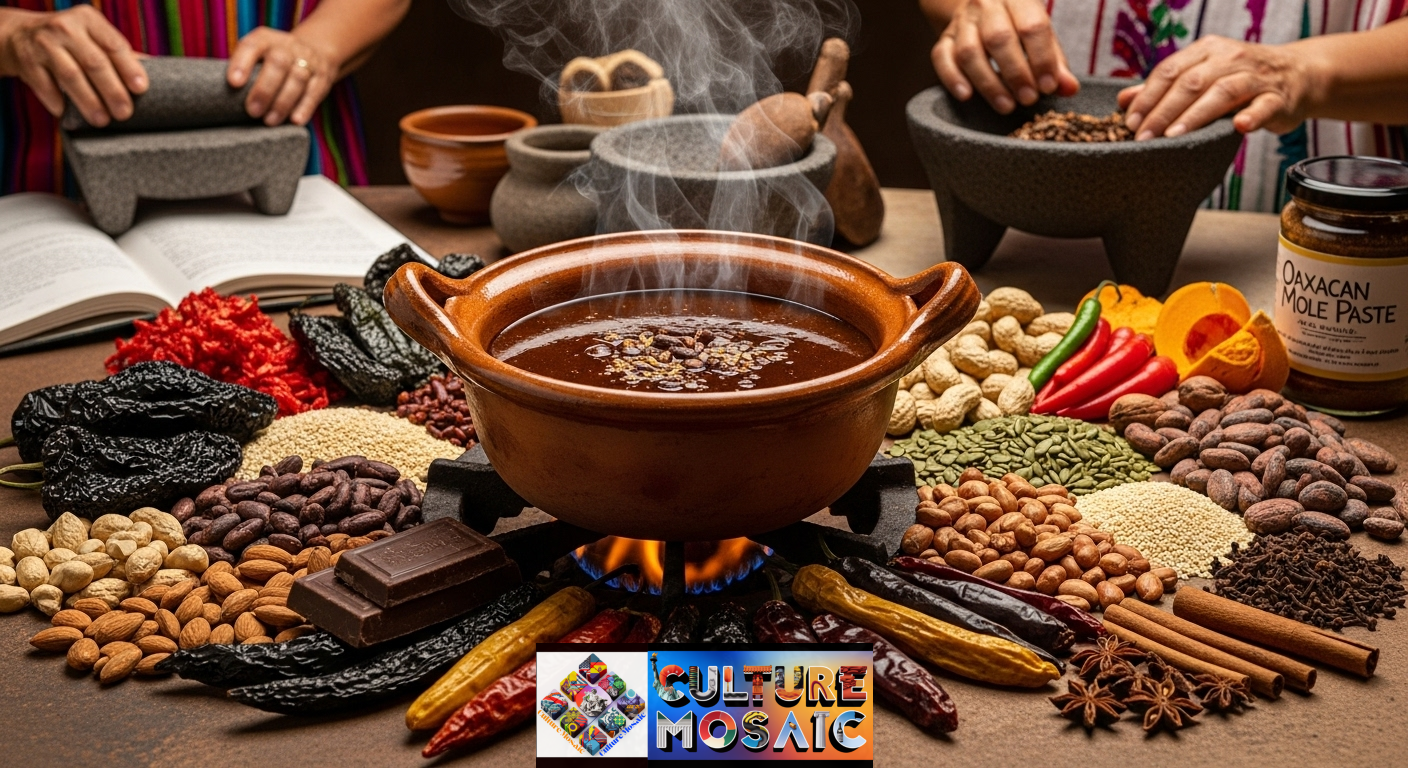
When Americans think of Mexican food, they often imagine tacos and burritos. But global heritage food from Mexico includes far more complex traditions, particularly the elaborate mole sauces of Oaxaca.
Traditional mole negro can contain over 30 ingredients, including multiple types of chiles, chocolate, spices, nuts, and seeds. The preparation takes days, involving roasting, grinding, and slow cooking. Families guard their specific recipes, passing them down through generations with subtle variations that identify each family’s version.
Oaxacan communities in the US have worked hard to preserve authentic mole traditions. They import specific chiles unavailable locally, maintain traditional grinding tools, and teach younger generations the patient process. Some Oaxacan restaurants in American cities receive their mole paste directly from family members in Mexico who still prepare it traditionally.
This global heritage food represents something crucial: the difference between simplified “ethnic food” and true cultural preservation. Making authentic mole requires knowledge, time, and ingredients that don’t fit fast-casual dining models. Yet Oaxacan American cooks refuse to compromise, knowing that their mole carries cultural identity and family history.
The growing American appreciation for complex mole demonstrates a maturing food culture. Diners increasingly understand that authentic heritage foods require patience, premium pricing, and respect for traditional methods.
Why Global Heritage Food Preservation Matters Now
The preservation of global heritage food traditions faces real challenges. Younger generations may lack time for labor-intensive recipes. Specific ingredients become harder to source. Economic pressure pushes restaurants toward faster, simpler preparations.
Yet communities continue fighting for their culinary heritage because these foods represent more than sustenance. Their language, history, and identity served on a plate. When a Filipino American child learns to make ube halaya, they’re connecting with ancestors. When a Korean American teen learns about gochujang fermentation, they’re preserving knowledge that industrialization threatens.
American interest in global heritage food can support these preservation efforts when approached respectfully. Buying from authentic producers, learning proper preparation methods, and understanding cultural context help keep these traditions alive.
The opposite happens when heritage foods get stripped of context and mass-produced without cultural involvement. That’s appropriation rather than appreciation, and it ultimately harms the communities that created these foods.
How to Support Authentic Global Heritage Food
Supporting global heritage food traditions requires intentional choices. Buy from businesses owned by community members who maintain authentic preparation methods. When you try a new heritage food, learn about its cultural significance rather than just consuming it.
Ask questions at restaurants. Most owners love sharing their food’s history and cultural importance. Learn the proper names of dishes and ingredients. Understand that higher prices often reflect labor-intensive traditional methods worth supporting.
Follow chefs and food writers from these communities. They’re the authorities on their own heritage foods, and their perspectives matter more than outside observers. Social media makes it easier than ever to learn directly from cultural insiders.
Consider taking cooking classes from community organizations. Many cultural centers offer workshops on traditional cooking methods, providing both skills and context. This direct learning honors the knowledge-bearers while preserving techniques.
The Future of Global Heritage Food in America
The American relationship with global heritage food is evolving positively. More diners distinguish between authentic heritage foods and watered-down versions. People increasingly value cultural knowledge and traditional methods.
Second and third-generation Americans are reclaiming their culinary heritage with pride. They’re opening restaurants that showcase regional specificity rather than pan-ethnic menus. They’re writing about their food cultures, correcting misconceptions, and educating curious audiences.
This shift benefits everyone. Americans gain access to incredible culinary diversity. Heritage food communities find economic opportunities through their cultural knowledge. And traditional foodways get preserved for future generations rather than disappearing.
The five global heritage food examples here represent a much larger story. Virtually every immigrant community brings culinary treasures that deserve attention and respect. From Laotian larb to West African jollof rice, from Japanese fermented foods to indigenous American ingredients, America’s dining landscape grows richer through authentic cultural exchange.
Conclusion: More Than Just Food Trends
Global heritage food represents something fundamental about human experience: our need to maintain connection with our ancestors, communities, and cultural identity. When Americans embrace these foods authentically, we participate in preservation efforts that matter beyond the dining table.
The purple ube latte, the gochujang-glazed chicken, the injera platter, these aren’t just trendy menu items. They’re invitations to understand different cultures, appreciate traditional knowledge, and support communities maintaining their heritage against homogenizing forces.
As American cuisine continues evolving, our best path forward involves respecting, learning from, and supporting the people who bring their global heritage food traditions to share. That’s how we build a food culture that’s both diverse and authentic, trendy and meaningful, distinctly American and genuinely global.
Frequently Asked Questions About Global Heritage Food
What makes a food a “heritage food” versus just traditional food?
Heritage food specifically refers to dishes or ingredients passed through generations within a cultural community, maintaining traditional preparation methods and cultural significance. While all heritage foods are traditional, not all traditional foods carry the same level of cultural preservation and community identity. Heritage foods typically involve specific knowledge systems, historical contexts, and preparation methods that community members actively work to preserve.
How can I tell if a restaurant serves authentic global heritage food?
Look for restaurants owned and operated by people from the culture being represented. Authentic establishments typically use proper dish names in the original language, maintain traditional preparation methods, and can explain the cultural significance of their menu items. The presence of customers from that cultural community often indicates authenticity. Be skeptical of fusion restaurants that strip heritage foods of cultural context or oversimplify complex traditional dishes.
Is it cultural appropriation to cook global heritage food at home if I’m not from that culture?
Cooking heritage foods from other cultures can be a respectful appreciation when done thoughtfully. Learn proper techniques from authoritative sources within that community. Buy specialty ingredients from businesses owned by community members. Give credit to the culture and understand the dish’s significance rather than treating it as just a recipe. Avoid claiming expertise or presenting heritage foods as your own creations. The key difference between appropriation and appreciation lies in respect, attribution, and supporting the originating community.
Why are authentic global heritage foods often more expensive than Americanized versions?
Authentic heritage foods typically require specialty ingredients, time-intensive preparation methods, and specialized knowledge that justify higher prices. Traditional mole might take days to prepare using 30+ ingredients. Proper injera requires days of fermentation and teff flour that must be imported. Authentic gochujang undergoes months of fermentation. When you pay for heritage food, you’re supporting traditional methods, fair wages for skilled preparation, and cultural preservation efforts. Mass-produced versions cut corners that compromise authenticity to reduce costs.
How do I learn more about the cultural context of global heritage foods I’m interested in?
Start by following food writers, chefs, and cultural educators from the community whose food you’re exploring. Many cultural centers and community organizations offer cooking classes and cultural events. Read books and watch documentaries created by people from those cultures rather than by outside observers. Visit restaurants and ask owners about their food’s cultural significance. Most people appreciate a genuine interest in their heritage. Social media platforms connect you directly with cultural knowledge-bearers who share traditional recipes and cultural context.

